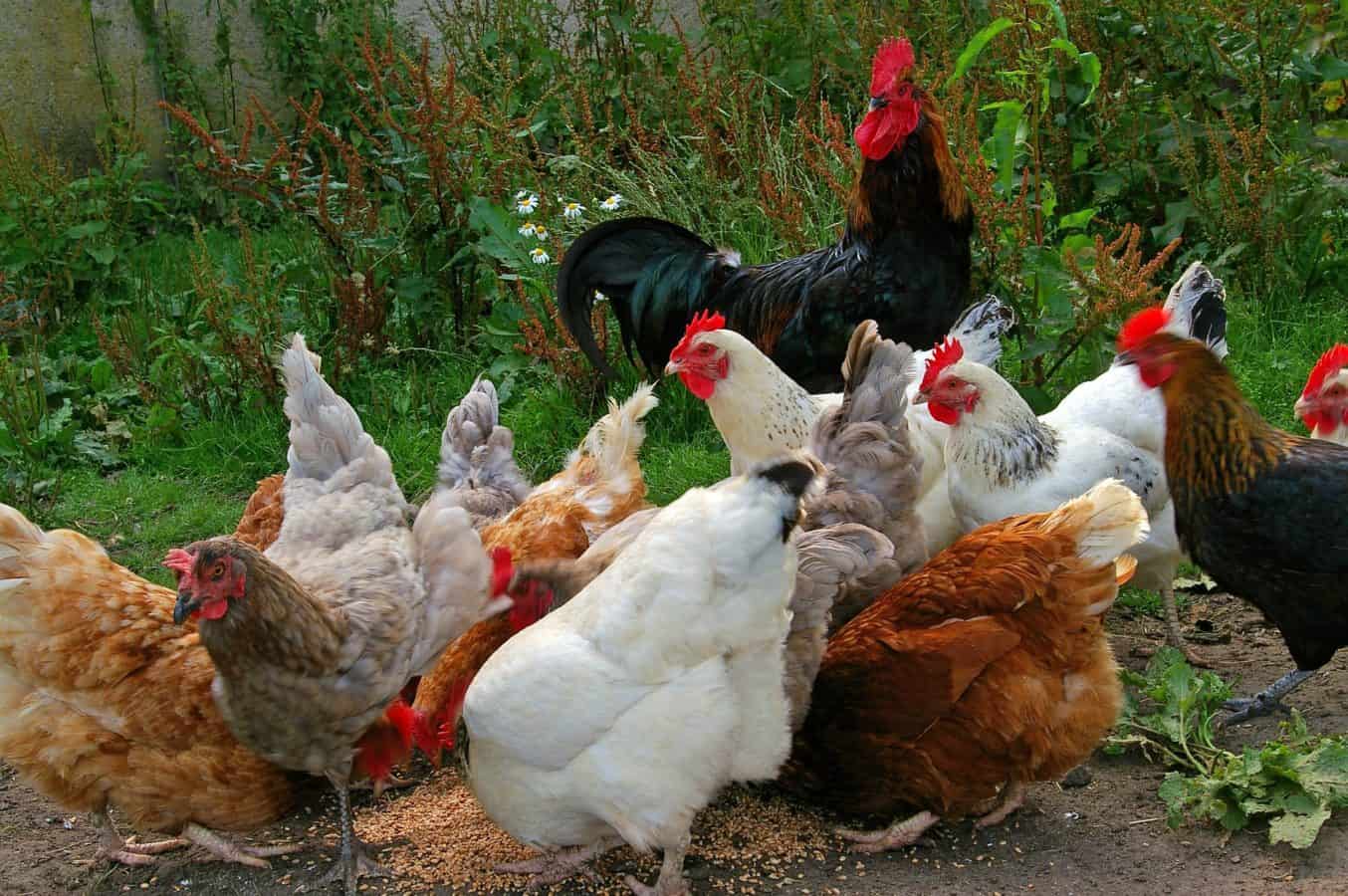So you’ve decided you’d like to increase the size of your household by adding a few foul friends in the backyard. Perhaps your interest was peaked by the wonderful eggs you’ve seen your next door neighbors gathering, or the sound of the rooster around the corner crowing at sunrise. Surprisingly, the number of American households raising chickens has grown profoundly in the last ten years. According to US Department of Agriculture studies in 2013, nearly one percent of all U.S. households own backyard foul, with numbers expected to increase to five percent in 2018.
Whether you grew up with chickens, or are a beginner to the poultry scene, there are several things to consider before beginning your own coop. Here are the top 7 things you should consider before starting your own flock.
- Are you zoned for backyard poultry?
- How many chickens can your backyard support?
- Choosing a breed of chicken appropriate for your family.
- Determining the sex of your chicks.
- How many chickens should I start with?
- Decide on a watering system
- Prepare the proper habitat.
1. Are you Zoned for Backyard poultry?
Make certain that your rural, urban, or suburban housing zone allows for backyard foul. In a study of U.S. urban poultry ordinances conducted by Boston University in 2015, over 93% of the nation’s largest cities permit poultry ownership.
2. How many chickens can your backyard support?
Choose a number of feathered friends that will be supported by the space available. Healthy chickens require space, feed, care, and solutions for waste removal.
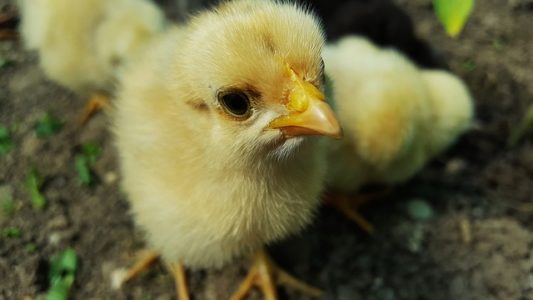
SThough most of us have seen chickens hatched from eggs in an elementary school class incubator, or perhaps in grandma or grandpa’s backyard, presently the most common place to acquire baby chicks is at a local farm supply store such as IFA, Cal Ranch, Tractor Supply Company, or a local hatchery, feed store, or poultry association. There are even options available to buy chicks online and have them delivered.
Personally, unless raising a new generation from our own coop, our family always enjoys visiting the local feed store in the early spring (or again in early winter) to view the variety of little peepers and choose a new crew to bring home and raise. There is nothing on earth as delightful as the sound of those little “cheep cheeps” accompanied by the laughter of small children as they hold their newfound friends on the way home from the store.
3. Choosing a Breed of Chicken Appropriate for Your Family.
There are several things to keep in mind when choosing which breed of chicken will be joining your family.
- Take weather into account. Will you need a breed that is hardy in winter, or that can survive in extreme heat conditions.
- Do you want a breed that is typically small, rare, or unusual?
- Do you want a breed that is a good egg producer, or that will rear chicks, do you care if your chickens lay white eggs, green eggs, brown eggs, or speckled eggs?
- Do you want a bird that lays eggs daily?
- Do you want a breed that is friendly and docile, or do you want a breed that is more skittish and protective?
- Do you want a breed that is known for their meat for butchering, or a breed that is recognizable for decorative plumage?
There are various breeds of chickens. Take the time in selecting the right breed for your needs.
4. Determining the Sex of a Baby Chick
Though large poultry hatcheries employ “chicken sexers” to distinguish male and female chicks before shipping or selling to retailers, there is always a chance that the chicks you may have to select from could contain a few that squeaked through the initial selection process. Typically, commercial sexers are only correct 75% of the time. For this reason, it will be important to conduct your own inspection of the chicks you will bring home.
Venting:
Typically, the easiest way to determine sex is to “vent” the chick. Simply turn the chick upside down in the palm of your hand and while closely examining the sex organ, gently squeeze its body using all fingers to hold firmly. Simultaneously, apply a gentle amount of pressure on either side of the chick’s vent, exercising extreme care not to squeeze too hard or cause injury.
Observe the vent closely, and if you see a small bump, resembling a pimple, this is the male chicken’s sex organ. Female chickens do not have this small bump. Additionally, certain breeds of chicken will develop feathering patterns based on sex.
Rooster Chick Characteristics:
Continue to monitor your chicks as they grow. Typically male chicks will exhibit rooster characteristics such as pointed feathers around their necks, back and tail.
Additionally, male chickens will develop larger combs and wattles, as well as large spurs on the back of their legs. Because most of these characteristics will not show up until the chicks are several weeks old, your best bet in determining the sex of baby chicks is venting, (described above).
5. How Many Chickens Should I Start with?
When deciding how many chickens to bring home there are several things you will want to consider. Keep in mind that chickens are social birds, so you will want to bring home at least three. Though technically two hens could keep each other company, it is recommended that three or more in a coop will better support the chickens’ “flock mentality”. (Yes, pecking order is a real thing).
How many eggs do chickens lay?
If you are considering egg-use, many farmers recommend three hens per two members of your household. So, a family of four would likely want six hens to meet their egg consumption needs. Typical laying hens will produce an egg approximately every 25 hours, roughly six eggs per week under ideal circumstances.
Consider your family’s typical egg consumption needs on a weekly basis and do the math. A coop with three to five hens could produce between eighteen to thirty eggs per week.
Space:
The next thing you will need to consider is how much space you have available for the chickens. The number of chickens you have and the amount of time you plan for them to feed “free range” or in a run will determine the space you should make available for them.
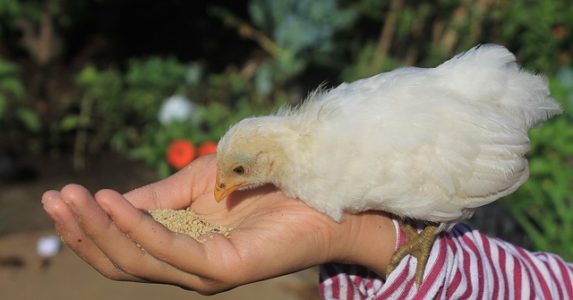
Feed:
You’ll want to provide your ladies with a good source of vitamins, minerals, and nutrients to support their growth and egg production. In addition to a pellet or mash mixture, many poultry owners will find that adding grains, such as wheat, barley, or corn to the chickens’ diet will add variety and nutrition, as well as keep your chicken friends happy.
Another factor to consider is the cost of feeding your fouls. Feeding your new brood is one of the most important tasks in raising backyard chickens. If you want a good healthy flock, choosing the right pellet, mash, and scratch mixture will make a big a difference in the health, growth and production of your flock.
We also love to give our feathered pals vegetable or fruit scraps or peels from the kitchen. Our backyard pals go absolutely nuts for popcorn, bananas, apple cores, celery leaves, orange peels, peanut shells, squash, zucchini, melon rinds, cucumbers, or even pumpkins.
One important thing that is recommended and that we have had great success with, is adding a Calcite supplement to our chickens’ diet, especially in the fall. In addition to simply crushing up and feeding the chickens their own egg shells, we buy Calcite, in the form of oyster shell or limestone supplements at the local feed store. Many chickens, though they will spend most of the day foraging for food, may develop a calcium deficiency, which is critical in egg shell production and bone growth. Some chickens who are deficient in calcium may begin producing weak or irregularly shaped (or even shellless) eggs.
If your hens are laying eggs, the recommended ratio for food is 1.5 lb of feed per chicken per week. Depending on the type of feed you choose and the breed of chicken, the amounts can add up. If you have a coop of five chickens, you should be giving them about 7.5 lbs of feed per week.
6. Decide on a Watering System
Be sure not to overlook how you will keep your flock hydrated. Hens require a great deal of water to produce eggs. Most mature chickens will drink approximately .5 liters of water per day in mild weather, which can reach as high as 1 full liter of water per day in warmer weather. It is
also important to keep the water your hens are consuming clean and free of fecal matter, algae, and other contaminates. Your chickens will be healthy and happy drinking any water source that is healthy for human consumption. There are numerous delivery methods available, such as water troughs, canisters, founts, fountains, or dispensers. It is important that these have an opening small enough to keep the chickens from wading through, but large enough to drink from. It is also important that the water source be covered so as to protect from algae growth. If you live in an area where temperatures reach freezing levels, a heat source (such as heated font, or warming plate) to keep water from freezing is also critical.
7. Prepare the Proper Habitat
Initially, you will want to keep your new baby chicks in a safe and well monitored location. Baby chicks are vulnerable to temperature extremes, and potential predators such as house cats (or barn cats), raccoons, and even larger chickens.
At our house, we have a special bin we call “the infirmary” near our garage that is used to house our growing baby chicks. At other times of the year injured or recovering furry and feathered friends use “the infirmary“. It is important to sequester any bleeding or injured chicken from the rest of the flock during the healing process, both to avoid infecting other members of the flock, and to avoid further injury or even death to the injured chicken at the hands of her fellow flock members. For a good treatise regarding common chicken illness and treatment, click here.
The infirmarybin we use is roughly 2 feet by three feet, and has a grated and locked lid to keep out curious other creatures, or even over-zealous friendly toddlers. (When we have been in a bind, we have found that a large plastic storage bin purchased at a Wal-Mart or Target, lined with pine shavings or newspaper, will also work just fine).
Above the cage, or bin, we suspend a heat lamp to keep the chicks’ brooding area nice and warm. Though there are numerous types and styles of lamps, we typically use a 250 watt incandescent bulb style. The lamp is suspended about 8 inches from the top of the brooding pen.
It is recommended that the temperature near the bottom of the pen be between 95-100 degrees for the first few weeks and then reduced by about 5 degrees per week until the chicks begin to grow their feathers (about one month to 6 weeks).
Some folks choose to use a “red light” which is believed to interfere less with chicken sleeping patterns, and may prevent issues with pecking. We have always used an incandescent heat bulb however, and have never had a problem. We even leave a radio playing near the new chicks, to keep them company, and hopefully cultivate a healthy interest in classic country or bluegrass 🙂
Transition:
When adding new chickens to an already existing flock you will need a transitioning strategy. The chicks will need to be kept in the brooding pen until they have grown most of their juvenile feathers. This will typically take about six weeks.
After that, depending upon the temperature outside, we move out chicks to a transition pen. The transition pen is located in the coop with the other adult chickens, but is separated with chicken wire, to keep the chicks safe from the adults who may begin harassment or pecking before the chicks are fully ready for the transition.
We sometimes get new chicks in the fall. this requires a transition period during the winter months. We keep a heat lamp in the coop, over the transition pen in the winter, to assist with the little juvenile’s transition into the big world of full grown chickens.
After a few weeks of getting acquainted with the other chickens, we allow them to wander in the “free range area” with the others, but keep the transition area open for them to use until they are ready to begin roosting.
Typically, new female chickens, called “pullets”, will begin laying eggs at approximately six months of age, depending on the breed. Lighter and smaller breeds may being laying eggs as early as 20 weeks. The eggs from young pullets will be small at first, and grow in size as the chicken matures.
Female chickens, or pullets will lay eggs without a rooster in the flock. Many people who are new to raising chickens think that there needs to be a rooster for egg production. There is no need for a rooster to have your hens lay eggs. If you want some of those eggs to hatch out little chicks then you will need a rooster, but if you are only wanting eggs you do not need a rooster.
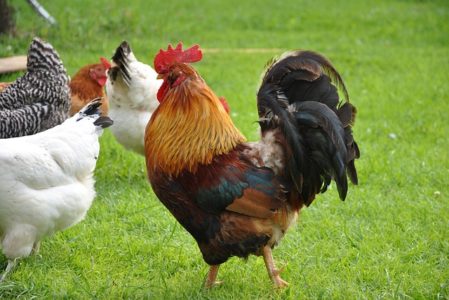
Roosters however do add some interest to a flock. They can be aggressive and protective of the hens. They also watch out for predators for the flock. Adding a rooster to the flock is something to really consider. Do some research before you go ahead and add a rooster to your flock.
Summary
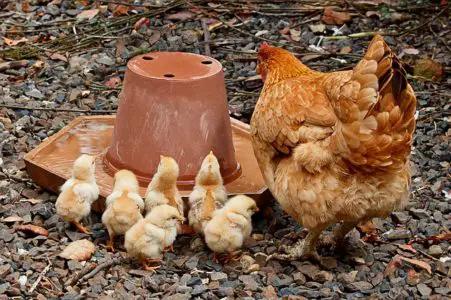
There are a lot of issues to consider when starting a new backyard chicken family. Whether it’s for egg production or simply to bring some personality to your backyard, we hope you will enjoy the variety and joy that chickens can bring to your life. We have enjoyed the differing personalities of our ever growing chicken family, and even have names for most of them. Don’t be surprised if you find that some of your new feathered friends nestle right into your heart, along with that nesting box in the coop.

